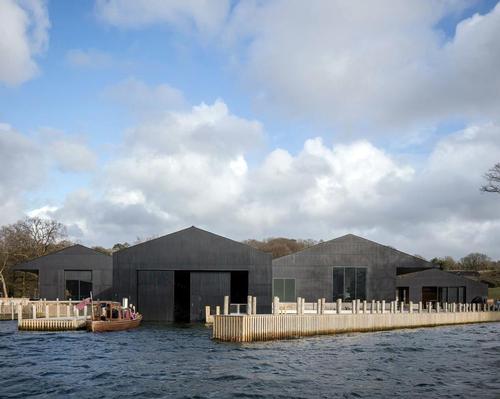26 Mar 2019
Windermere Jetty boating museum opens in the Lake District
BY Luke Cloherty

A new museum dedicated to 200 years of boating history at the Lake District National Park and Unesco World Heritage Site in the north of England has opened in Windermere, Cumbria.
Called the Windermere Jetty, the new museum comprises a cluster of seven buildings and has been designed by architectural firm Carmody Groarke.
The museum sits on the site of the former Windermere Steamboat Museum, which was founded in 1977 by George Pattinson, a steam enthusiast who amassed a unique collection of boats associated with the Windermere area of the Lake District.
More than 40 vessels are on display at the museum, including SL Dolly – said to be the oldest mechanically powered boat in the world; a tarn boat that illustrator Beatrix Potter used to sketch in; and a 50-foot Victorian steam launch boat called Branksome – built in 1896.
"Our design team have created an extraordinary museum, which connects visitors with the collection, to the lake and with the wider Lake District landscape, telling the incredible stories of those to whom Windermere has been so important," said Rhian Harris, CEO of Lakeland Arts, which owns the museum.
A series of new jetties installed on the lake next to the museum allows visitors to sail on the 1902 vessel Osprey – one of the museum’s fully-restored Edwardian steam launches.
Meanwhile, Real Studios has designed five themed displays for the Windermere Jetty, called Just Visiting, Life of Luxury, War and Innovation, Spirit of Adventure and Speed. Each of these exhibits tells the individual stories of people whose lives are linked to the collection and boats within it.
Other features include an open-access conservation workshop, in which visitors can watch a team of conservation boat builders restore vessels to their former glories, and a lakeside cafe with views onto Lake Windermere.
Funding has been provided mainly by the Heritage Lottery Fund (HLF) for the project, with support also coming from DCMS Northern Cultural Regeneration Fund, Regional Growth Fund, the Rural Development Programme for England and other trusts and foundations.
Close Window